Genetically Modified Frankenstein Crops
Genetically Modified Crops is a subject I have stayed quiet on now for some years to view with my own eyes the data, evidence, and now damage these Frankenstein crops are causing to our earths environmental insect, agricultural, horticultural, and animal, and now human species. I have studied botanical horticulture and agriculture in great depth going to university to gain the necessary qualifications and experience to speak up on many subjects with experience and knowledge.
Scientists are interfering with Mother Nature to a degree now that they have made the inevitable occur through negligent interference of botanical and agricultural crops that’s bred mutant strains of crops and insects plus slaughtering our natural-born insects and other plant life leaving us exposed to guinea pig crops that have now infested this earth, and human food chain plus working its way through the Deoxyribonucleic acids of our most precious insects and plant life.
What is Genetically Modified Crops (GMC)? Genetically Modified Crops are bio crops or plants that have been altered through the use of radiated (GMO)that have then had their Deoxyribonucleic acid altered in laboratories thus in turn gives us a genetically mutated or “modified” species of plant that can if the Deoxyribonucleic acid is altered correctly withstand certain strains of viruses to fungi plus environmental conditions such as heavy rain fall that can cause mildew to form to drought that can wipe out an entire million dollar crop. Most (GMC) do not need wind, bird or insect pollination to pollinate them thus in turn kills of our natural mother nature born species.
The genetic engineering that is used within the botanical mutant laboratory world is extremely precise to what scientist is teaching the plant to do through the Deoxyribonucleic acid structure of mutant breeding or (mutagenesis) as it is otherwise known. Organisms (GMO) are exposed to radiation that is then fed in to the plant, via the nucleus of the seed. (GMO) is Genetically Modified Organisms that I shall explain later on.
Scientists have created Genetically Modified Crops via the use of radiated Genetically Modified Organisms (GMO) in a way to introduce a new type of synthetic immune system OR “strain” to the plant in order to fight of old and new pests and diseases to environmental conditions from which is where the main problem now lies within the environmental world that we as environmentalists’ and animal activists are now gravely concerned off. (GMC) are mutant crops formed (GMO) that is killing our protected species to unprotected species to breeding mutant Frankenstein species of plants and insects that are resistant to literally anything other than human destruction.
As an environmentalist and animal saviour that has studied in great depth for many years botany, agriculture, and animal and marine welfare I am now finding it extremely worrying that we ourselves plus animals are being exposed to radiated crops that scientists have not experimented on in great depth thus creating “mutated crops” that can now interfere with via wind flow to simple amenity horticultural practices other crops thus then creating another form of x breed infecting the planet and the human and animal food chain. Concerned? That’s no longer a question that can be asked though more of frightened is the word simply because I know how it is done, what methods are used, what is hidden in the laboratories and exactly how much radiation is exposed to (GMO) that is then fed in to the (GMC) which one can only describe as a mass extermination of nature or human life waiting to happen that’s been mutated in a university agricultural laboratory.
Graph above indicates the rise of (GMC) since 1996 to 2008 indications for 2012 are more than 7x the rate of 2008 alone
What Is (GMO) a genetically modified organism (GMO) or engineered organism (GEO) is an organism whose genetic material has been altered using genetic engineering techniques. These techniques, generally known as recombinant DNA technology, use DNA molecules from different sources, which are combined into one molecule to create a new set of genes. This DNA is then transferred into an organism, giving it modified or novel genes. Transgenic organisms, a subset of GMOs, are organisms that have inserted DNA from a different species. GMOs are the constituents of genetically modified foods.
(GMO) Are tested on rodents to primates everyday. Huntingdon Life Sciences and Monsanto are both responsible..
Why where (GMC) Genetically Modified Crops invented primarily to help in the third world and to push crop production to the boundaries of Mother Nature to maximise agricultural sales in and outside of the third world. (GMC) Was also introduced to cut down on crop and non-crop loss through flooding, drought, and insect attack that was causing massive loss of plant and vegetable crops that pushed farmers out of businesses, meaning less food being sent to the supermarkets which in turn meant more foods have to be imported or exported depending on geographical location. (GMO) was all the rage at first until people realised the full extent of what scientists had actually achieved as well as destroyed.
Are crops the only Frankenstein research? NO they are not, Glofish where the first pet to be sold as a non-marine (marine) fish that had been genetically altered in the laboratory. There is a lot of controversy around (Genetic Modification) and so there should be. We as humans have no right to alter the structures of (DNA) to make attractive coloured fish, fancy foods, or even longer living creatures. This is going way beyond the ethic s of the animal and environmental world of which is then infecting through x breeding non-genetically modified creatures to plants.
A (GMO) is produced using the insertion or deletion of genes, in to the “subject” these genes usually or mostly come from other plant or animal life, thus creating your (GEO) Genetically Engineered Organism that has had its (DNA) tweaked and tampered with to alter life, colour, strength, taste to structure and more.
Extract below is from Wikipedia –
“GMOs are used in biological and medical research, production of pharmaceutical drugs, experimental medicine (e.g. gene therapy), and agriculture (e.g. golden rice). The term “genetically modified organism” does not always imply, but can include, targeted insertions of genes from one species into another. For example, a gene from a jellyfish, encoding a fluorescent protein called GFP, can be physically linked and thus co-expressed with mammalian genes to identify the location of the protein encoded by the GFP-tagged gene in the mammalian cell. Such methods are useful tools for biologists in many areas of research, including those who study the mechanisms of human and other diseases or fundamental biological processes in eukaryotic or prokaryotic cells”.
Genetically Modified Organisms have been used now in all of the following which is why we are now more than concerned. The following have all been altered, plants, cisgenic plants, crops, microbes, mammals, pharmaceuticals human therapeutics, food qualities, human gene therapy, insects to marine life.
Why are we concerned though? Well the fact that natural Mother nature is being tampered with is a grave concern, (GMC) (GMO) and (GME) is unethical, not suitable for our planet or ecological, marine to human food chain, and runs the risk of not just causing mutations within the natural world but also deadly diseases to mutant forms of plant and non-plant life.
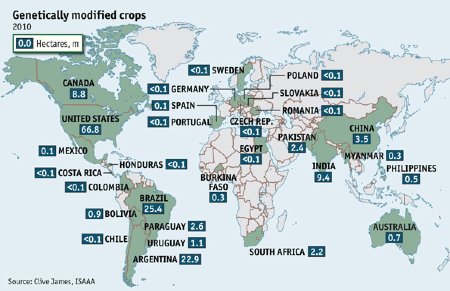
Picture above shows countries that grow (GMC) it is by far more than this though that has been stipulated.
There are some fundamental views that I wish to acknowledge here that we now have to look further into. I myself even being qualified in Botany am still not fully aware of the dangers other than researching them and going back upon my own records of when (GMC) which is the main subject here of which I wish to delve deeper in to, to fully understand the dangers of what we as humans are placing our planets natural living life into. The fundamental cautions to concerns are listed below of which we must now all be made aware of and take a great deal of notice of.
I am very concerned within the botanical world that now we are seeing a grave danger starting to be born. In 1997 I was arrested by the United Kingdom Police Force for destroying along with many other eco-activists many (GMC) Genetically Modified Crops, of which I do not advise no one to do but mutant Frankenstein crops MUST be halted to stop any further damage to our ecosphere and environment, we cannot and must not take the chances no more of allowing these crops to ruin our ethical natural world of plant, insect and mammal life through cross breeding and contamination.
Picture above shows Greenpeace destroying (GMC CROPS)…….
Imprecise Technology—a genetic engineer moves genes from one organism to another. A gene can be cut precisely from the DNA of an organism, but the insertion into the DNA of the target organism is basically random. As a consequence, there is a risk that it may disrupt the functioning of other genes essential to the life of that organism.
Side Effects—Genetic engineering is like performing heart surgery with a shovel. Scientists do not yet understand living systems completely enough to perform DNA surgery without creating mutations which could be harmful to the environment and our health. They are experimenting with very delicate, yet powerful forces of nature, without full knowledge of the repercussions.
Widespread Crop Failure—Genetic engineers intend to profit by patenting genetically engineered seeds. This means that, when a farmer plants genetically engineered seeds, all the seeds have identical genetic structure. As a result, if a fungus, a virus, or a pest develops which can attack this particular crop, there could be widespread crop failure.
Threatens Our Entire Food Supply—Insects, birds, and wind can carry genetically altered seeds into neighbouring fields and beyond. Pollen from transgenic plants can cross-pollinate with genetically natural crops and wild relatives. All crops, organic and non-organic, are vulnerable to contamination from cross-pollination.
HEALTH HAZARDS
No Long-Term Safety Testing—Genetic engineering uses material from organisms that have never been part of the human food supply to change the fundamental nature of the food we eat. Without long-term testing no one knows if these foods are safe.
Toxins—Genetic engineering can cause unexpected mutations in an organism, which can create new and higher levels of toxins in foods.
Allergic Reactions—Genetic engineering can also produce unforeseen and unknown allergens in foods.
Decreased Nutritional Value—transgenic foods may mislead consumers with counterfeit freshness. A luscious-looking, bright red genetically engineered tomato could be several weeks old and of little nutritional worth.
Antibiotic Resistant Bacteria—Genetic engineers use antibiotic-resistance genes to mark genetically engineered cells. This means that genetically engineered crops contain genes which confer resistance to antibiotics. These genes may be picked up by bacteria which may infect us.
Problems Cannot Be Traced—without labels, our public health agencies are powerless to trace problems of any kind back to their source. The potential for tragedy is staggering.
Side Effects can Kill—37 people died, 1500 were partially paralyzed, and 5000 more were temporarily disabled by a syndrome that was finally linked to tryptophan made by genetically engineered bacteria.
ENVIRONMENTAL CONCERNS
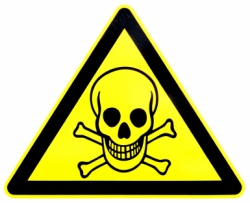
Increased use of Herbicides—Scientists estimate that plants genetically engineered to be herbicide-resistant will greatly increase the amount of herbicide use. Farmers, knowing that their crops can tolerate the herbicides, will use them more liberally.
More Pesticides—GE crops often manufacture their own pesticides and may be classified as pesticides by the EPA. This strategy will put more pesticides into our food and fields than ever before.
Ecology may be damaged—the influence of a genetically engineered organism on the food chain may damage the local ecology. The new organism may compete successfully with wild relatives, causing unforeseen changes in the environment.
Gene Pollution Cannot Be cleaned up—once genetically engineered organisms, bacteria and viruses are released into the environment it is impossible to contain or recall them. Unlike chemical or nuclear contamination, negative effects are irreversible.
HUMAN HEALTH
A public health issue was narrowly averted when independent tests on the GE soybean revealed that people allergic to Brazil nuts also reacted to the engineered soybean.16
Many studies have shown that DNA does not always fully break down in the digestive system. 17, 18 Gut bacteria can take up genes and fragments of DNA19 which could potentially lead to the spread of antibiotic resistance.
According to Salk Institute cell biologist David Schubert, the crude and unpredictable nature of genetic engineering techniques could lead to “the biosynthesis of molecules that are toxic, allergenic or carcinogenic … GM food is not a safe option, given our current lack of understanding of the consequences of recombinant technology.”20 Schubert and others recommend long-term animal feeding studies to test for possible toxic and reproductive effects.
GM maize that had not been approved for human consumption (StarLink) by the US Food and Drug Administration was found in store-bought taco shells distributed by Kraft Foods in September 2000. 12th.
HONEY BEES UNDER THREAT
As the disappearance of honeybees continues, researchers are trying desperately to discover the cause of Colony Collapse Disorder (CCD). General consensus at this point is that there is more than once cause and the latest culprit may be genetically modified crops. This is one area of research being neglected as mainstream scientists insist GM crops are safe.
For the last 100 years, beekeepers have experienced colony losses from bacteria, (foul brood), mites (varroa and tracheal) and other pathogens. These problems are dealt with by using antibiotics, miticides and other methods of pest management. Losses are slow and expected and beekeepers know how to limit the destruction. This new mass die-off is different in that it is virtually instantaneous with no warning of the impending collapse.
John McDonald, a bee keeper in Pennsylvania with a background in biology, speculated that genetically modified crops could play a role in CCD. Although the government constantly reassures us that these genetic manipulations are safe for both humans and the environment, his hope is that looking more closely at these issues might raise questions about those assumptions.
The common bacterium, bacillus thuringiensis(Bt) supplies the most commonly used segment of transgenic DNA. Bt has been used for decades by farmers and gardeners to control crop damage from butterfly larvae. Now, instead of spraying this bacterium directly on the crops, where it is eaten only by the target insects, the genes containing the insecticidal traits are incorporated into the genome of the plant itself. As the genetically modified plant grows, these Bt genes are replicated in every cell of the plant, including pollen. Therefore, every cell of each GM plant contains its own poison aimed to kill the target insect. The target insects consume some portion of the plant, then once ingested, the toxin produced by the Bt genes causes crystallization in the guts of boring larvae and thus death. The primary toxin is a protein called Cry1Ab. In the case of field corn, the targeted insects are stem and root-borers and butterfly larvae.
Although scientists “assure” us that bees (hymenopterans) are not affected, there are Bt variants available that target beetles, flies and mosquitoes. There is indisputable proof that Cry1Ab is present in beehives. Beekeepers spray Bt under hive lids to control the wax moth because the larvae cause messy webs on the honey. Canadian beekeepers have noted the disappearance of this moth even in untreated hives, apparently the result of bees ingesting Cry1Ab while foraging in GM canola plants.
Bees forage heavily on corn flowers to obtain pollen for the rearing of young bees. These pollen grains also contain the Bt genes of the parent plant, because they are present in the cells from which pollen forms. Mr McDonald believes it may be possible that while Cry1Ab has no direct lethal effect on young bees, there may be some sub-lethal effect, such as immune suppression, acting as a slow killer.
Tens of millions of acres of genetically modified crops are allowing the Bt genes to move off crop fields and contaminate other flowers from which bees gather flowers. “Given that nearly every bite of food that we eat has a pollinator, the seriousness of this emerging problem could dwarf all previous food disruptions”.(John McDonald) He proposed an experiment to compare colony losses of bees from regions where there are no GM crops to losses of colonies where they are exposed. He wanted to put test hives where GM crops are so distant from the hives that the foraging worker bees would have no exposure to GM crops. Researches readily dismissed his ideas and no one followed through with such an experiment.
At this point, he decided to do his own investigation at his own expense. He established 8 colonies in new wooden hives to ensure no possible disease transfer from old hives. The bees were fed continuously with sugar syrup until the hives were placed at the selected locations. “At both sites the flowers of goldenrod provided ample pasturage, with the honey flow commencing in the middle of August and tapering off by the second week in October. Medium-depth empty honey storage supers (a super is the part of the beehive used to collect honey) were put on the hives at this time in addition to the three brood chambers already there. By the simple expedient of lifting the hives from behind, progress could be roughly monitored.
This monitoring showed that the hives of the farmland bees, while numerous, were not gaining weight. Meanwhile, the non-farm colonies steadily gained weight. This part of the experiment was terminated Oct. 14 with the removal of the honey storage supers, with these results: The farmland bees had not even started to work in the honey supers and will require extensive feeding before winter sets in. The non-farm bee colonies produced, in total, nearly 200 pounds of extra honey in addition to about 150 pounds per hive stored in the over-wintering brood supers. These colonies will be left in place to see whether the die-off of last season is repeated. These results should encourage new research to determine what factor or factors are present in farm country to cause such a discrepancy in honey production.” John McDonald
Another study indicating that Bt may be contributing to the death of honey bees was undertaken in Mexico. This study compared the effects on young adult honeybees of 2 concentrations of Cry1AB (3 and 5000 parts per billion) to a chemical pesticide, imidacloprid. 3 different effects were evaluated by the researchers:
1. Survival of honeybees during sub-chronic exposure to Cry1Ab.
2. Feeding behaviour.
3. Learning performance at the time that honeybees become foragers.
Neither test concentration of Cry1Ab had lethal effects on the honeybees, however, when exposed to the higher concentration, feeding behaviour was affected. The bees spent longer ingesting the syrup which contained the Cry1Ab which could mean smaller amounts of pollen would be collected. These bees also had impaired learning performance. Honeybees normally do not continue responding to an odour when no food is present, but should be discouraged and seek other sources. These bees continued responding to the odour which again, could affect pollen gathering efficiency. This study indicates that although Bt is not directly lethal to honeybees, it could indirectly lead to colony death due to failure to collect enough food to sustain the hive. These findings may be the key to the difference in honey production in Mr. McDonald’s experiment. Bt appears to have non-lethal effects which become apparent only when the lethal effect is absent. Although not directly lethal to non-target organisms, the toxins from the Bt gene potentially puts non-target insects such as honeybees at risk.
LINKS
Monsanto - http://www.salon.com/2012/09/19/monsanto_crops_cause_tumors/
MORE CONCERNS
Scientists doing work on genetically modified (GM) crops have warned that trouble could be on the horizon for GM crops. A team of researchers reported recently in the journal proceedings of the National Academy of Sciences that resistance of cotton bollworm to insect-killing cotton plants involves more diverse genetic changes than expected.
This could be very difficult for ordinary people to understand because of the complexity of the subject. However, in simple terms, scientists are warning the world that more work needs to be done to establish the safety of GM crops before farmers start their mass production in the world. Farmers, politicians and the general public that thought GM crops are a gateway to profitable crop production and global food security will find this hard to believe.
However, the truth is coming out that although GM crops are cheaper to produce we need to take a closer look at them to determine their long-term safety. It is important for the reader to understand the GM crop research background.
Research background
Driven by the quest to mitigate the rising costs of farm inputs and farming in general, scientists through plant and animal breeding have produced fast growing and early maturing farm animals and crops. Scientists over the years have produced fast growing, heavy and disease resistant animals and crops. This helped the farmer to lower production costs which had a positive impact on the price of many farm commodities. High quality farm products suddenly became affordable raising the standard of living for many people and also increased food security in many countries.
Recently, scientists started researching on genetic engineering. Genetic engineering involves the manipulation of the genetic material of plants and animals to change their size and growth pattern that has an impact on their production and profitability.
Suddenly scientists started making animals and plants grow faster and became more disease resistant which reduces the use of farm chemicals and chemicals residues on farm commodities that have proved harmful to the consumer and the environment.
Genetic engineering
In an endeavour to decrease sprays of broad-spectrum insecticides, which can harm animals other than the target pests, cotton and corn have been genetically engineered to produce toxins derived from the bacterium Bacillus thuringiensis (Bt).
Bt toxins kill a number of harmful insect pests but are friendly to man and environment.
Consequently, Bt has been used by farmers producing GM crops since 1996. Unfortunately, over time, scientists have learned, that rare genetic mutations that confer resistance to Bt toxins are becoming more common as a growing number of pest populations adapt to Bt crops. Scientists find this frightening.
Research findings
The Journal of the National Academy of Sciences revealed that researchers have found that Cater-pillars of the cotton bollworm, Helicoverpa armigera, can munch on a wide array of plants before emerging as moths.
This species is the major cotton pest in China, where the study was carried out.
Bruce Tabashnik, head of the department of entomology at the University of Arizona College of Agriculture and Life Sciences, who co-authored the study, considers the findings an early warning to farmers, regulatory agencies and the biotech industry.
“Scientists expected the insects to adapt, but we’re just finding out now how they’re becoming resistant in the field,” Tabashnik said.
It is clear that scientists are very worried about the gene mutations that they had not expected in the beginning. However, they have thrown in the towel. They have geared themselves to do more research in this subject to find out what could be done to manage gene mutations in GM crops. Researchers need time and money to do this research and one hopes the countries will make funds available to do this important research.
Countries must be careful
Governments and decision makers in the world must think carefully before adopting and legalising production of GM crops in their countries.
Your friend knows that many countries have been sceptical about production and consumption of GM crops. Although these countries have been using GM grain for animal feed, they have been also taking a pre-caution not to propagate them in their countries. To make sure that no farmers produce GM crops they milled all donor corn and distributed maize floor.
Anyone that comes into contact with (GMC) we advise on a “environmental health issue” please destroy them immediately or ask the farmer to. The investigations and notifications that one has done shows that we are heading in to a Frankenstein era that now needs to be controlled BEFORE it consumes us……
“Who will you believe” ………..
Author anoyymous


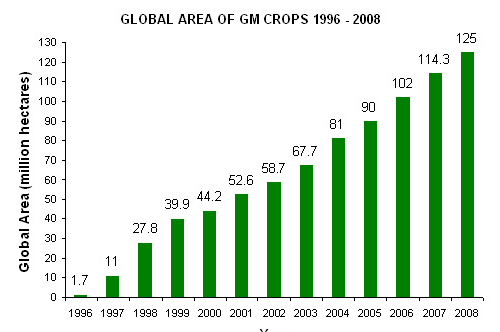
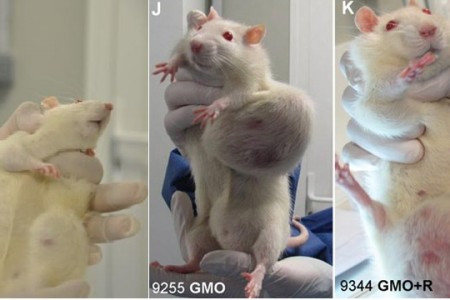
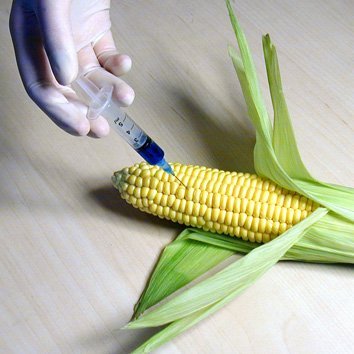



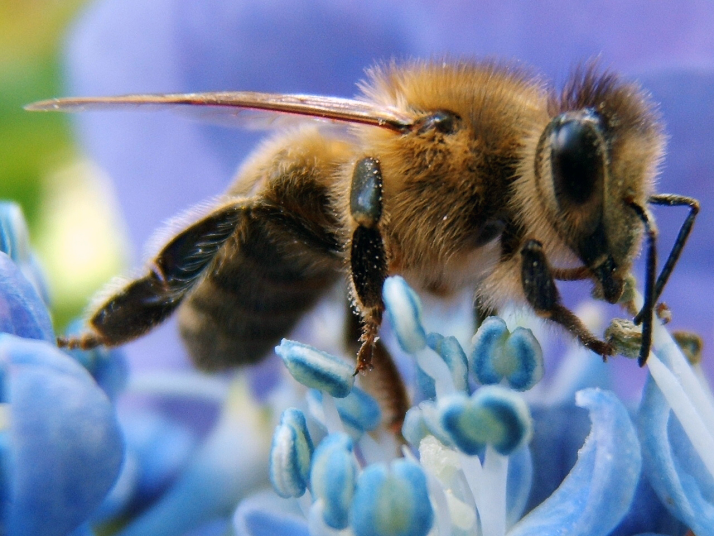


Thank you for your reply, should it merit a response we will respond in due course. This site is owned by International Animal Rescue Foundation and moderation is used.